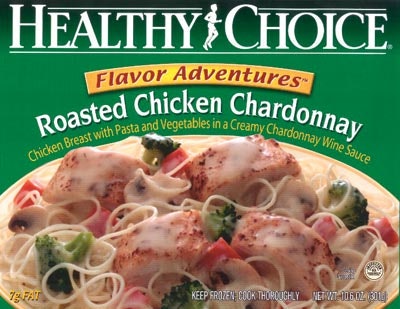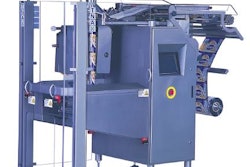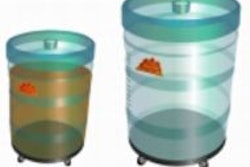With a new February report from a high-level Food and Drug Administration obesity task force in hand, FDA Commissioner Mark McClellan will move forward this spring with food labeling reforms. It’s expected that these changes will probably dwarf the impact the original 1994 Nutrition Facts panel had on packaging. McClellan has stepped into the role of “general” in the federal government’s war on obesity.
This is not Lincoln’s McClellan, the hesitant head of the Army of the Potomac. Bush’s McClellan is more of a swashbuckler. And he has considerable room for “swordplay” because even industry groups agree that food labels should contain more information on calories and portion size.
But no one inside the agency or industry believes that label change and simplification alone will lead to a national calorie catharsis. Companies may have to put food packaging itself on a diet. “We do recognize there’s been a change in manufacturers’ packaging practices,” says Christine Taylor, director of the Office of Nutritional Product Labeling and Dietary Supplements in the Food Center for Safety and Applied Nutrition at FDA. “They’re definitely using larger single-serving containers than they were in the 1990s, when we set this up.”
The FDA established its Nutrition Facts panel in 1994 based on direction given by Congress when it passed the Nutrition Labeling and Education Act of 1990. The law provides serving sizes for many foods based on the 1977-1978 and the 1987-1988 Nationwide Food Consumption Surveys.
Serving sizes?
Aside from the fact that more recent science and eating habits surveys have cast doubts on some of that data, the FDA “reference servings” statute has more holes than a piece of Swiss cheese. Any package that contains less than 200% of the reference amount can be billed as a single-serving package. When a product contains 200% or more of the reference amount, the manufacturer may label the product as a single serving if the entire package can reasonably be consumed at one sitting.
The FDA has the legal authority to force companies to reduce the size of single-serve packages (by eliminating the loopholes in the statute). Whether FDA, more radically, could go so far as to require servings within bulk packages to be individually wrapped, is debatable. But there were some influential voices raised on behalf of those kinds of severe regulatory moves during the FDA’s workshop on food labeling and packaging in November.
Bob Smith, president of R.E. Smith Consulting and head of research for Nabisco for seven years before his retirement, said during his presentation: “Serving sizes need to be individually wrapped.” In a follow-up interview, he backed off that position because he recognizes the packaging costs would be prohibitive.
Incentive for food companies
A better idea, Smith indicated, would be for the FDA to offer companies some sort of seal of approval if they downsized all single-serve packages or packaged foods in individual servings within a bulk package in a particular food product line.
At the November workshop, Brian Wansink, professor of marketing and nutrition science at the University of Illinois, Urbana-Champaign, made a presentation chock full of evidence on how packaging size and shape influence consumer eating habits. He told about one recent test at a movie theater in Chicago. Half the people got fresh popcorn in a large container, the other half got 14-day-old popcorn in an extra-large size container. The moviegoers with the huge bucket ate more.
“Even if they had this terrible, terrible popcorn, what happened was that they still ate 40 to 45 percent more,” Wansink reported to audience laughter. “And if you asked, ‘Hey, what did you think of that popcorn?’ They’d go, ‘Oh, God, that stuff was terrible.’ So this probably is not something that’s going to be saved by a label.”
Other tests Wansink has run with soda served in short, wide glasses versus tall, thin glasses found that “packages” with different shapes, but with the same volume, also affect food consumption. “They ended up consuming about 88 percent more than if you gave them a tall, skinny glass,” Wansink said.
Serving ‘suggestion’
Wansink also related a test where he gave moviegoers a tube of potato chips with a red chip placed every seventh chip. A control group snacked from a regular tube. “What we ended up finding is that structural dividers in these cans, even though they had no copy on them, decreased the product’s consumption. When people ran into dividers, even though they didn’t specify one serving, they affected consumption.
“So structural packaging barriers appear to decrease consumption. And they might even be profitable. For instance, it might be possible to develop a healthy portion package and price it appropriately.”
In a separate interview, Wansink said there are a number of companies that he declines to identify, developing what he refers to as “PC” for portion-control packaging. The key decision these companies have to make, he adds, is what percentage of a product’s customers is “PC prone.”
Another option is changing the appearance of a package. Smith says one of the reasons Nabisco’s SnackWell’s line was successful was its green package. “No one had used green packaging before, and no one thought it could be successful,” he states. “I’m not sure why it worked. But if you look in the grocery today, one-third of the foods are packaged in green.”
Healthy Choice a pioneer
Actually, SnackWell’s, which came on the market in 1992, followed the somewhat ambivalent lead of Healthy Choice brand foods from ConAgra Foods, Inc., Omaha, NE, that used a greenish black package when the Healthy Choice line was introduced in 1988. Healthy Choice went more assertively green in 1993.
SnackWell’s is a product of Kraft Foods, Northfield, IL, and Kraft has been the most aggressive food marketer, at least in its public position, in taking on the obesity challenge. It set up an advisory panel last summer to recommend changes, including the downsizing of single-serve packages. Those recommendations were expected after press time.
“General” McClellan will be watching Kraft closely, and his colonels and majors will judge Kraft’s response as either dilatory or dynamic. That judgment will undoubtedly have an impact on whether the upcoming FDA rulemaking will be softened by an expectation of voluntary industry action or sharpened because of a feeling that some blood needs to be drawn before food companies will respond to the obesity challenge.


























